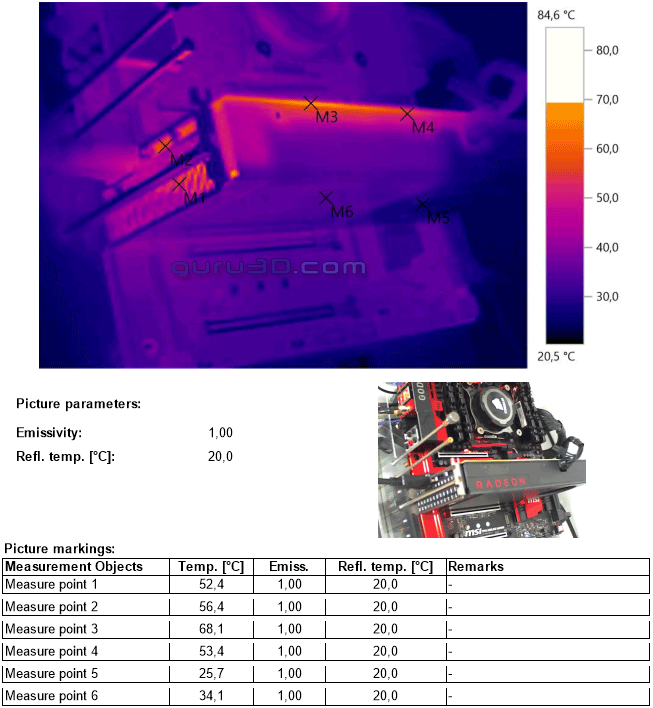Graphics Card Thermal Imaging Measurements (FLIR)
Thermal Imaging Temperature Measurements
Over the past years we have been trying to figure out what the best possible way is to measure temperatures on hardware. Multiple options are available but the best thing to do is to visualize heat coming from the product or component being tested. The downside of thermal imaging hardware is simple, FLIR camera's with a bit of decent resolution costs up-to 10000 EUR. Hence we passed on it for a long time.With a thermal imaging camera a special lens focuses the infrared light emitted by all of the objects in view. This focused light is scanned by a phased array of infrared-detector elements. The detector elements create a very detailed temperature pattern called a thermogram. It only takes about one-thirtieth of a second for the detector array to obtain the temperature information to make the thermogram. This information is obtained from several thousand points in the field of view of the detector array. The thermogram created by the detector elements is translated into electric impulses. The impulses are sent to a signal-processing unit, a circuit board with a dedicated chip that translates the information from the elements into data for the display. The signal-processing unit sends the information to the display, where it appears as various colors depending on the intensity of the infrared emission. The combination of all the impulses from all of the elements creates the image. We can see hotspots on the PCB indicating, for example, GPU but also VRM temperature as well as how heat is distributed throughout a product. We do hope you will enjoy this new technology as it did cost us an arm and a leg to be able to implement it.
** WE UPDATED THIS FLIR IMAGE WITH A LONGER AND HEAVIER RUNTIME (1 HOUR BURN IN) DUE TO REPORTED HEAT ISSUES.
So we reach almost 80 degrees C on M1, the GPU area which is on par with thermal sensor readings. At M2/M3 the VRM area is located, this is also running close to 80~90 Degrees C. That looks good really, typically a good indicator of the fact that the cooler ventilates and exhausts outwards properly, and yes, under stress the card certainly does produce and dump a lot of heat outside your chassis.
When we position the thermal camera outwards we can see that the overall cooler design really works the way we like it. Take a good look, as that is what we like to see, lots of dimmed colors and nothing bright. That equals a modest heat signature overall. The card is taking in air and exhausting it outwards.
The card does not bleed any heat onto the motherboard. You can clearly see the VRM area (M1) heat up to 65~70 Degrees C though. That is way within spec. In our experience, the card does blow out heaps of hot air, but does that properly by exhausting it. The thermal photos back that up.
Due to reported PCI-Express power issues we included the above thermal photo, the card indeed does leak heat, the PCI-Slot does get a little warmer. But this is not too concerning what we see here.





